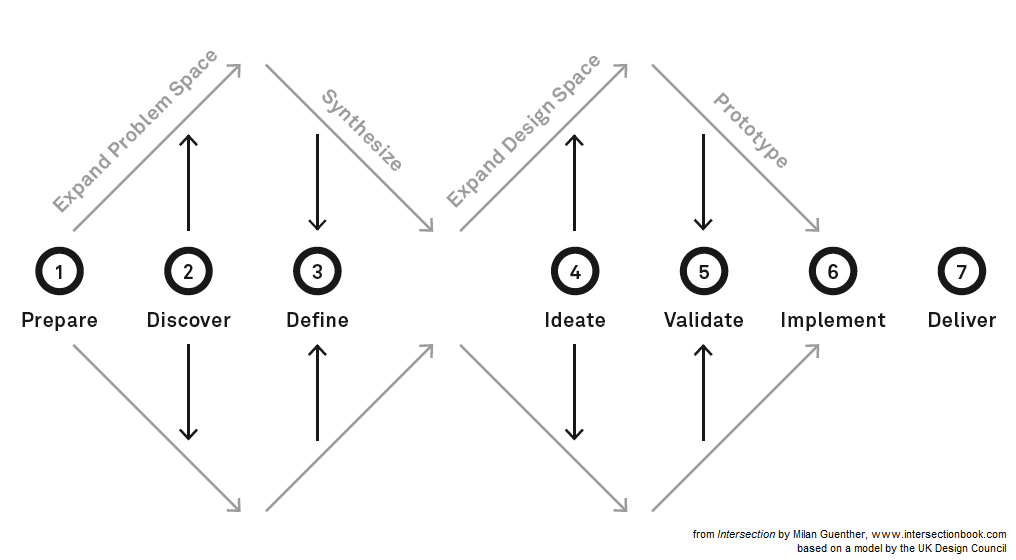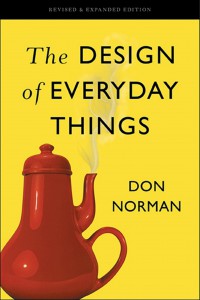Donald Norman is a UX/UI design guru, well-known as co-founder of the Nielsen Norman Group.
He is the author of The Psychology of Everyday Things (POET), also known as the bible of modern usability and user-centred design and The bible of Cognitive aspect of Design.
If you haven't had a chance to read this spectacular piece, you can find the the summary of The 6 Principle of Design Here.
In 2013, Norman released an updated version of POET, called The Design of Everyday Things – Revised and Expanded Edition.
Here’s what he changed, and why it’s important.
Greater focus on signifiers

Originally, POET focused extensively on affordances.
Affordances are the relationship between an object that provides the opportunity for action by a person and the person.
An example, a door handle affords someone to open a door. Therefore, the affordance is the relationship between the person and the door handle.
Affordances tell people what’s possible in a particular setting (e.g. a door handle means that it’s possible to open the door).
Affordances are great in a world of design based primarily in the real world; however, in the digital sphere they make a bit less sense, in the digital realm the concept of environment is a little haphazard.
In response, The Revised and Expanded focuses much more on signifiers.
Signifiers are signs that tell the user what’s possible, rather than a physical thing that tells a user what’s possible.
Signifiers are far more relevant for digital design. As a digital designer, you don’t have the full facilities of a real environment to drive action. Rather, you need to rely on your signs to tell people what to do – thus, signifiers take the place of the affordances.
Emotion has been added
In the intervening years of writing
POET and releasing the revised edition, there’s been a significant body of work done on
the role emotion plays in design.
The revised edition takes that into consideration by overlaying the seven stages of action model (which explains the seven stages that people go through to do anything) with the three levels of design theory. The result is a consideration of what emotion is driving action at each point of the journey.
Culture takes more consideration
Everyone is guilty of designing with a bias. Naturally, we all have opinions about what we think is the best way to do something. Unfortunately, those ideas of best practice, even in the most fundamental and simple ones are still usually heavily informed by culture.
The revised edition takes those cultural influences into account when discussing design.
Improved understanding of errors
In the revised edition of
POET, Norman restructured the discussion of errors.
To better reflect digital-focused design and take into account more up-to-date literature that’s been developed over the last twenty years, he now divides slips into two categories and mistakes into three categories.
The two revised slip categories are:
Action based slips. Slips where either the objective is right but the action is wrong, or the goal is wrong but the action is the correct way to get there. For example, if the goal is to close an app, and the user selects the wrong button to do it. Right goal, wrong action.
Memory lapse slips. This is when, at one point, the user knew what to do, but just forgets. For example, if the user knew the right button to close an app, but has since forgotten.
And the three mistake categories:
Rule-based mistakes. When the wrong rule or heuristic is applied – for example, you were calculating surface area of a rectangle and you added the sides instead of multiplying them.
Knowledge based mistakes. This is when the incorrect knowledge is applied to the problem. For example, taking the wrong road because you thought it was the correct one.
Memory lapse mistakes. When users get distracted and forget where they are in the process. For example, if you’re counting cups of flour and you forget how many you’ve added.
Extensive treatment of real product development
Since he wrote
POET, Don Norman has (among other things) worked in the development of new products for a range of companies. As a result, he’s included chapters that focuses on the very real challenges of product development; including time, budget, scheduling restrictions, as well as the challenge of competing requirements for the same resource.
At the same time, he discusses the theory of The Double Diamond Model, an important product development model. The first diamond covers discovery and project definition, the second covers development and finally delivery.

The Revised Edition covers real world business challenges for design and new product development. Specifically, it details the difference between radical innovation and incremental innovation, and how human-centred design is fundamentally a process of incremental innovation rather than radical.
Summary
The Design of Everything: Revised and Expanded Edition

The Design of Everyday Things: Revised and Expanded Edition is a beneficial and much-needed update to the classic. Looking at design with a stronger digital influence, as well as addressing the real challenges for organizations to both innovate and deploy new products, the revised edition strikes the balance between new content while sticking to the design principles outlined in the original – principles that remain as relevant today as they were 25 years ago.
As usual, Don Norman over-delivers to the design community with another brilliant edition.
